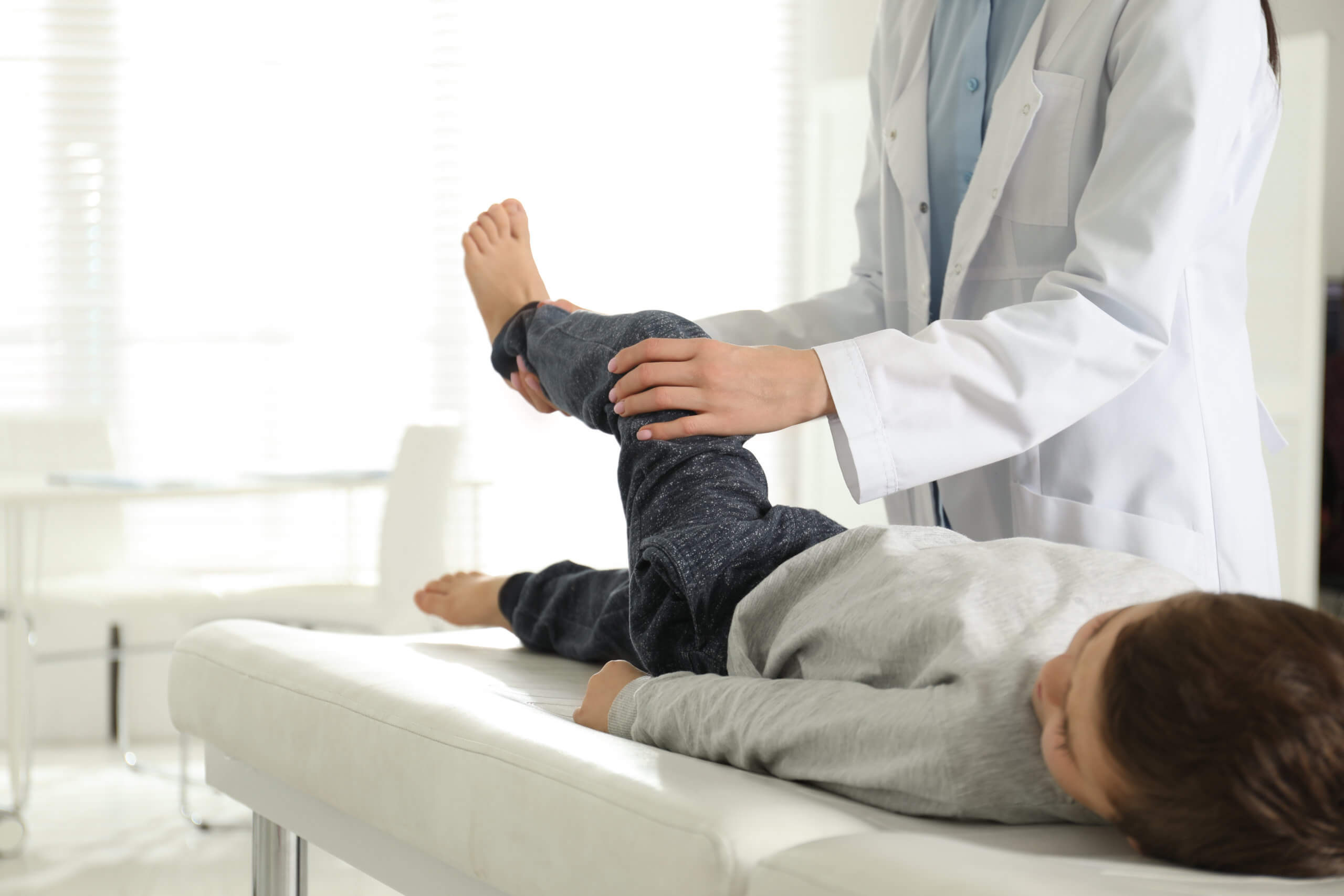Kids Get Arthritis Too: July Is Juvenile Arthritis Awareness Month
Arthritis is most commonly considered an older person’s disease. And with good reason: The majority of arthritis patients are adults with osteoarthritis, the type of disease associated with wear and tear on the joints.
However, there is another type of arthritis that can affect children. About 1 in every 1,000 children in the U.S.—about 300,000 total—have juvenile arthritis (JA), an autoimmune condition. July is Juvenile Arthritis Awareness Month 2021, and at South Island Orthopedics, we’re committed to both helping these children live active, healthy lives and raise awareness of this painful disease that’s often misunderstood in young people.
In fact, the pediatric orthopedic specialists at SIO are committed to helping children with a range of orthopedic conditions, from simple sprains and fractures to chronic conditions like JA, cerebral palsy, and muscular dystrophy. Parents on Long Island can rest assured that their children are receiving the best possible care in a kid-friendly, welcoming environment that’s close to home.
Why We Recognize Juvenile Arthritis Awareness Month 2021
 Although JA shares some similarities with the adult disease, it’s not identical, and it’s often surprising to hear about a child with the condition. That’s why Juvenile Arthritis Awareness Month was launched: To help parents, teachers, friends, and others gain a better understanding of the disease and how to support patients.
Although JA shares some similarities with the adult disease, it’s not identical, and it’s often surprising to hear about a child with the condition. That’s why Juvenile Arthritis Awareness Month was launched: To help parents, teachers, friends, and others gain a better understanding of the disease and how to support patients.
Juvenile arthritis is the name for the disease that causes joint inflammation in children. Although other conditions can cause acute joint inflammation, doctors diagnose arthritis when the swelling, pain, and stiffness in the joints aren’t relieved or cured by other treatments.
Unlike osteoarthritis—which is caused by time and use—that breaks down joint cartilage, causing bones to rub together, JA is an autoimmune disease. Autoimmune diseases cause the immune system to attack healthy cells and tissues in the body, leading to inflammation, pain, and a loss of function.
Arthritis in kids is known as juvenile idiopathic arthritis, meaning it stems from unknown causes. Researchers have even determined that it’s not a genetic condition. There are different types of JA, which, include:
- Systemic JA affects the whole body and also causes fevers, rash, and joint pain.
- Oligoarticular affects four or fewer joints and is the most common— and often mildest— form of the disease.
- Polyarticular arthritis—rheumatoid factor negative—affects five or more joints and causes fever and the development of bumps when pressure is put on the body.
- Polyarticular arthritis— rheumatoid factor positive—indicates a child has specific proteins in their blood that make them more susceptible to joint damage and erosion of joint tissue.
- Psoriatic arthritis causes a red, scaly rash in addition to joint pain.
- Enthesitis-related arthritis affects the legs and spine by causing inflammation in areas where tendons attach to bones. This form of arthritis is often associated with juvenile ankylosing spondylitis (inflammation of the lower back joints) and inflammatory bowel disease (Crohn’s or ulcerative colitis).
- Undifferentiated arthritis, meaning the condition fits into more than one type—or none of the previous categories.
Different types of arthritis present with different symptoms, and require variations in treatment. Although pediatric rheumatologists are typically the primary medical providers for JA patients, most children see a team of doctors, including orthopedists, ophthalmologists, dentists, and others.
Do You Suspect Juvenile Arthritis? When to See a Doctor
One of the goals of Juvenile Arthritis Awareness Month 2021 is to alert parents and caregivers to the signs of JA. Sometimes, the symptoms can mimic other conditions and aren’t always obvious. Again, because most people associate arthritis with painful, swollen joints, in the elderly, it’s easy to mistake symptoms of JA for something else.
It’s also important to note that while pain and joint swelling are common with JA, they aren’t always the first symptoms to appear or may not be as obvious as others. Parents should make an appointment to see an orthopedic doctor or rheumatologist if their child has symptoms including:

- Soreness or pain in the joints.
- Joint swelling.
- Warmth and inflammation in the joints.
- Swollen fingers and toes.
- Limping.
- Stiffness in the morning after sleeping.
- Reluctance to use an arm or leg.
- Reduced activity.
- Challenges with fine motor activities.
- Persistent, low-grade fever.
- Skin rashes.
- Changes in the finger and toenails.
- Muscle weakness.
- Fatigue.
- Growth irregularities, including uneven limb development or slow growth.
Some children also develop an eye condition called iridocyclitis, or inflammation of the colored part of the eye. This is a treatable condition, but because it typically doesn’t have any symptoms, it must be diagnosed by an eye doctor during a regular eye exam. If your eye doctor mentions iridocyclitis, further examination by a rheumatologist is needed.
Treating Juvenile Arthritis
 Diagnosing and treating JA is vital to preventing or reducing permanent joint damage. In fact, with treatment, most children with JA live normal, healthy, and active lives. Although there is no cure for arthritis (but one of the goals of Juvenile Arthritis Awareness Month is to spread awareness and raise money to help find one) with treatment, children can go into remission, meaning there are few, or no symptoms of the disease.
Diagnosing and treating JA is vital to preventing or reducing permanent joint damage. In fact, with treatment, most children with JA live normal, healthy, and active lives. Although there is no cure for arthritis (but one of the goals of Juvenile Arthritis Awareness Month is to spread awareness and raise money to help find one) with treatment, children can go into remission, meaning there are few, or no symptoms of the disease.
Doctors diagnose JA by checking for physical signs of the disease (rash, joint swelling, pain, limited range of motion) and performing imaging and lab tests to look for signs of joint damage and inflammatory markers, such as specific proteins. Performing multiple tests also helps rule out other potential illnesses, such as Lyme disease.
Treatment takes a multifaceted approach, with the goals of slowing disease progression, relieving symptoms, reducing joint damage and preserving joint function, and reducing the long-term health effects of the disease. Conservative treatment plans incorporate several therapies, including:
- Steroid injections to reduce inflammation in the joints.
- Immune suppressing drugs to keep the immune system from attacking the joints.
- Over-the-counter or prescription non-steroidal anti-inflammatory drugs (NSAIDs) to relieve pain.
Among non-surgical therapies, exercise is one of the most important treatments for JA. Low-impact activities like swimming, walking, and yoga are typically recommended to help manage stiffness and pain. Children may also receive occupational and physical therapy to help them learn ways to stay active and perform their typical tasks.
Although orthopedists may recommend splints or mobility aids for some children, or develop modifications for certain activities, JA doesn’t keep children from attending school or participating in extracurricular activities. That said, the Juvenile Arthritis Alliance (JAA), part of the Arthritis Foundation, provides support groups, summer camps, and a wealth of JA information and resources for kids and their families.
Staying involved in social activities is vital to maintaining a fulfilling quality of life. JAA notes that maintaining a positive attitude and focusing on what your child can do, rather than the limitations of their condition, is the foundation of treating JA.
South Island Orthopedics and Juvenile Arthritis
Orthopedic surgeons are a vital part of any JA patient’s care team. As experts in joints, muscles, and bones, their expertise can help prevent permanent damage to the joints and preserve their function and mobility into adulthood. In rare cases, a JA patient may require surgery to reposition a joint that’s become deformed. However, joint replacement is typically reserved for adults and seldom performed on children.
The pediatric orthopedic surgeons at South Island Orthopedics are committed to helping young people manage their JA during Juvenile Arthritis Awareness Month 2021 and beyond. We are focused on helping all children live healthy, active lives.
If you suspect that your child has any type of musculoskeletal condition, make an appointment to see a pediatric orthopedic surgeon at SIO.
Posted in: Awareness Month
